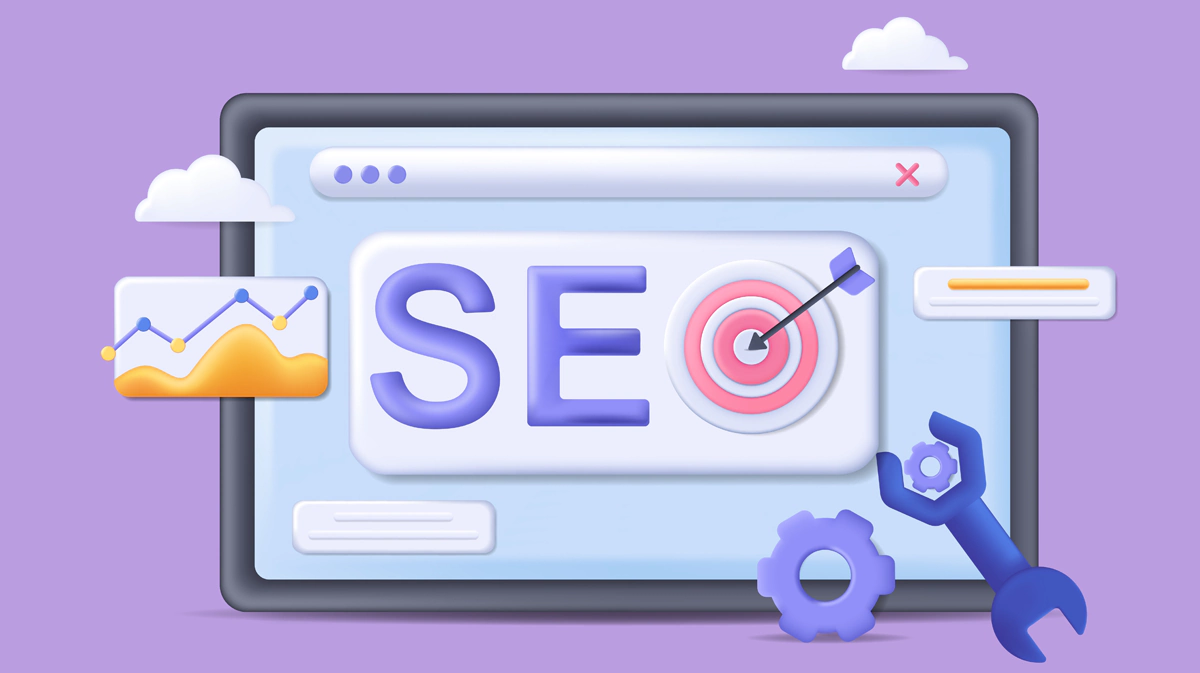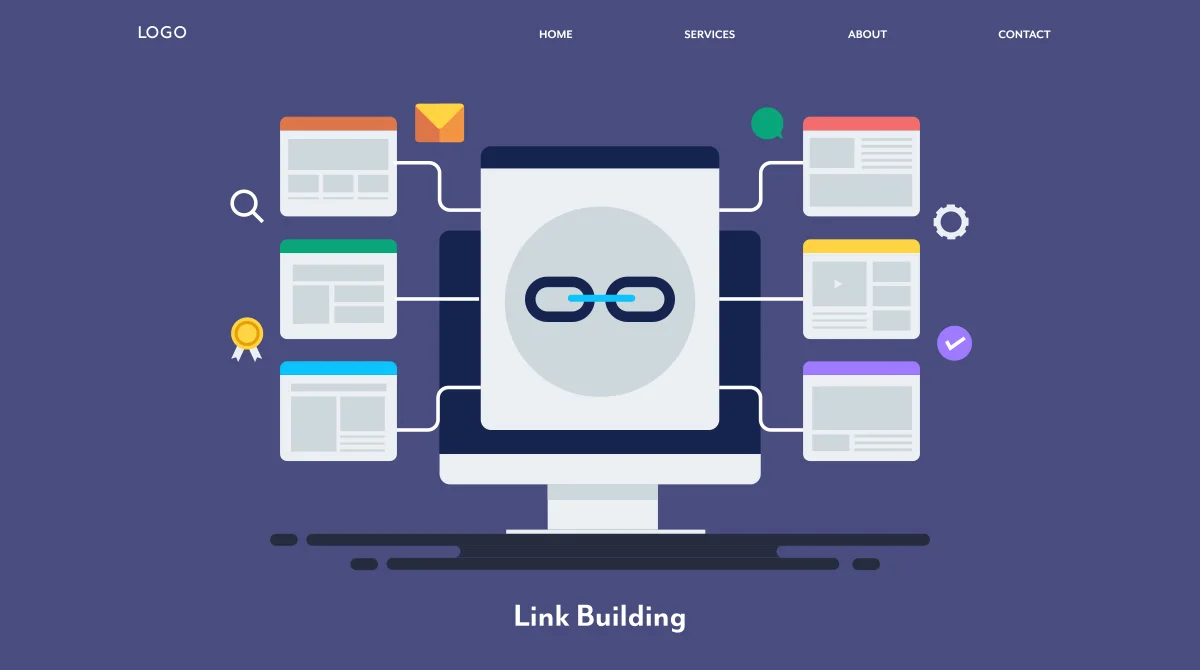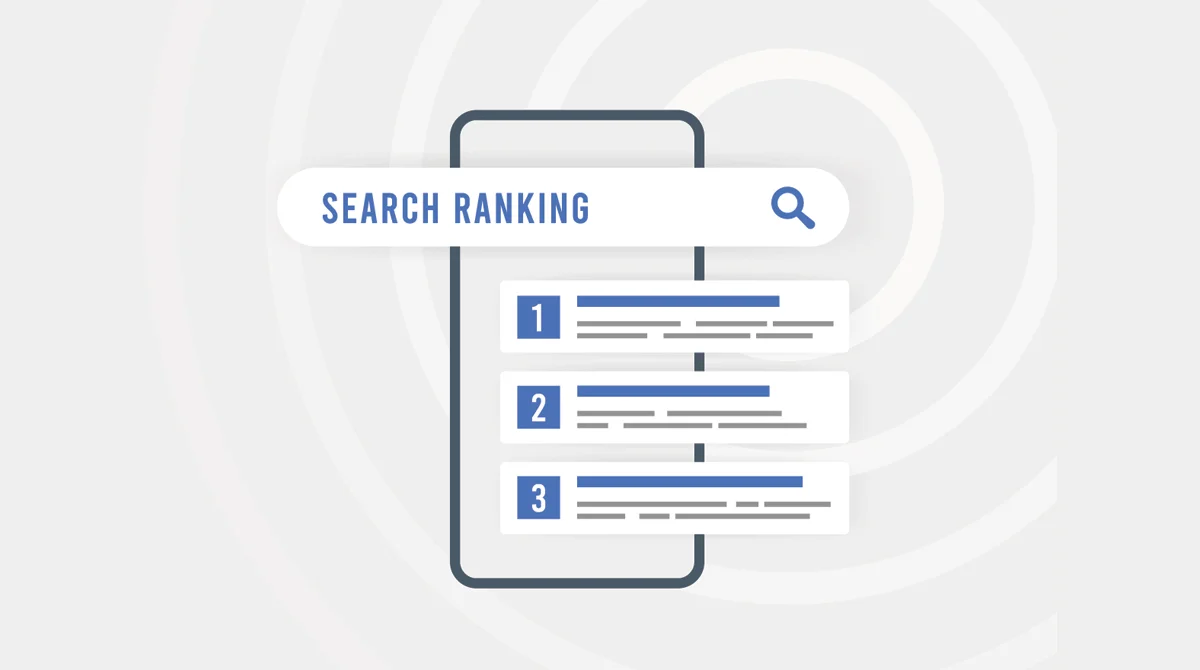Today, businesses face tough competition without the web. Increasingly, shoppers are abandoning traditional stores to embrace online shopping. Businesses struggle to survive due to high overheads, poor footfalls, and constant market indifference.
First, it threatens you with the risk of losing customers to competitors who offer 24/7 online shopping when you sell through conventional physical locations. Think of a potential loss of opportunity to collect customer data for personalised services or the challenge of expanding your business in the future with outdated technology. By 2025, eCommerce will likely dominate over 24% of global retail sales, and one may quickly lose a competitive edge over other competitors by simply staying offline.
Developing a well-structured eCommerce site is one of the most important things one can do to satisfy the shopper’s needs and the grading standard. This guide answers all queries related to eCommerce throughout the year 2025, from setting a business model to working with the latest trends while designing an eCommerce website that attracts customers, increases sales, and improves sustainability.
Why do You Need an eCommerce Website?
With people’s focus on ease and accessibility, an eCommerce website has become imperative to stay ahead of modern expectations. Below are the main reasons why starting an online store is vital for businesses in 2025:
Growing Online Shopping Trend
There has been a rapid global shift toward online shopping, with 72% of consumers opting for it for convenience (Statista, 2023). An eCommerce website allows businesses to:
- Reach a global market: Overcome location limits and access international customers.
- Appeal to tech-savvy shoppers: A store wants to create its appeal to techie customers by offering mobile-friendly options to lure younger consumers into shopping.
- Exploit situations that arise: Innovate with the shopping experience using new technologies like voice shopping, AI tools, and AR.
The central focus of online presence will enable organisations to compete in 2025. Small businesses with eCommerce saw a boom in sales of around 30% during COVID-19, while stores relying solely on brick-and-mortar approaches have not fared well.
Lower Operating Costs with Around-the-Clock Access
Online stores avoid expenses like rent, utilities, and staff wages, offering several key benefits, such as:
- Constant availability: Businesses can earn money anytime, catering to customers across various time zones without staff involvement.
- Automation options: Tools like Zoho Inventory or HubSpot enhance inventory management, order handling, and customer service.
- Growth potential: Business growth opportunities arise when companies bring out new products or expand into new markets with minimal infrastructure costs, simplifying growth efforts.
These cost savings allow businesses to focus resources on innovation and attracting customers. For example, automating repetitive tasks like order updates or email notifications can save up to 20 hours weekly. This extra time enables teams to focus on more strategic objectives.
Data Collection Opportunities for Personalisation Purposes
eCommerce platforms provide valuable insights from customer interactions. Utilise data to:
- Monitor browsing habits: Discover which products customers view, add to their carts, or leave behind.
- Examine purchase records: Review sales data to identify patterns and preferences that guide targeted marketing strategies.
- Offer personalised experiences: Provide tailored experiences by using AI tools to suggest products based on previous purchases or browsing habits.
Research by McKinsey (2023) shows that personalisation improves customer satisfaction by 20%, encouraging long-term loyalty. Netflix uses a personalised recommendation system to suggest content matching user interests, which helps keep subscribers and reduces cancellations.
Related read: 8 Tips for Increasing eCommerce Sales
Staying Adaptable in a Constantly Shifting Business Environment
The digital economy is changing quickly, and eCommerce sites allow easy adjustments. For instance:
- Add new payment options: To meet different customer needs, include choices such as cryptocurrency, Buy Now Pay Later, or digital wallets.
- Refresh product listings promptly: Show new trends or seasonal items without being limited by stock.
- Modern tools: AI chatbots should assist customers quickly, while augmented reality can allow customers to try on products virtually.
Adapting to changes allows businesses to compete in responding to evolving customer needs. For example, Sephora’s latest innovation was the introduction of AR technology, enabling customers to try makeup online.
Related read: Top 15 Most Powerful Ecommerce SEO Tips to Increase Sales
How to build an eCommerce Website?
Creating an eCommerce website involves careful planning and proper execution. Follow these steps to design a site that supports your business goals and provides a positive user experience.
Define Your eCommerce Business Model
Begin by defining your business model to guide your development choices. Common models include:
- B2C: The sale of products directly to individuals, such as clothing or electronics.
- B2B: Selling goods or services to other businesses, such as bulk software licenses.
- C2C: Transactions between individuals, allowing them to buy, sell, or trade, are done through specific platforms such as eBay or Etsy.
Select the framework best fit for your audience, offerings, and financial ambition.
Choose an eCommerce Platform
Choose a platform with the right features, growth potential, and simplicity. Some of the leading contenders for 2025 are:
- Shopify: This platform offers specialised tools for those running smaller businesses. It features easy-to-use drag-and-drop capabilities and built-in SEO tools.
- WooCommerce: A WordPress plugin commands full flexibility and complete control. It is targeted towards more technically proficient users.
- Magento: Tailored for large businesses requiring advanced customisation and multi-channel support.
Consider transaction fees, hosting services, and integrating other applications into the platform. Over 6,000 Shopify apps allow users to add features such as live chat or email tools easily.
Start Customising Your Website
The new website must be attractive and easy to navigate by putting into practice these strategies:
- Responsive design: It must work well on desktops, tablets, and smartphones.
- Branding Consistency: In line with that, include your logo, colours, and fonts throughout your site for instant brand recognition.
- Making navigation simple: Include clear menus and search options so visitors can find information quickly.
Eliminate clutter by focusing on clean designs and fast loading speeds to lower bounce rates. For instance, Amazon’s straightforward layout and one-click purchasing system have contributed significantly to its success.
Set Up Your Online Store
Set up key backend systems to maintain efficient operations:
- Payment systems: Connect secure platforms like Stripe, PayPal, or Apple Pay to provide multiple payment options.
- Shipping services: Work with carriers like FedEx or DHL and include real-time tracking to improve customer experience.
- Tax management: Automated software like Avalara handles local tax rules and maintains compliance with legal requirements.
To foster trust, create straightforward returns, refunds, and privacy policies. For example, Zappos’s easy return policy has contributed to its strong customer loyalty.
Product Setup and Management
Arrange your catalogue to boost visibility and sales:
- Grouping: Organise products by category, price range, or purpose to simplify browsing.
- Quality visuals: Use clear 4K images, 360-degree views, and videos to highlight product features.
- Stock management: Keep inventory synced across platforms to avoid overselling and ensure accurate stock counts.
Update listings frequently to add new items, sales, or seasonal offers. For instance, ASOS refreshes product pages weekly to stay aligned with trends.
Marketing and SEO Setup
Improve your website’s performance for search engines and customer engagement:
- Keyword research: To reach targeted audiences, focus on specific phrases such as “organic cotton yoga mats under $50.”
- On-page optimisation: Update meta titles, alt text, and URL structures to enhance your search engine rankings.
- Content creation: To attract organic visitors, start a blog with helpful articles like “How to Choose the Perfect Running Shoe.”
Use tools like Google Analytics and SEMrush to monitor results and refine your approach. For example, SEMrush’s keyword tracking feature can reveal top-performing keywords, helping you adjust your content for better outcomes.
Launch Your Website
Before launching, complete detailed testing:
- Check all functions: Ensure checkout processes, mobile usability, and payment systems work smoothly.
- Gather user feedback: Ask beta testers to review navigation and design, highlighting areas that need improvement.
- Do a soft launch: Share the website with a small audience to spot any final issues before the full release.
Promote the launch using email campaigns, social media, and influencer collaborations. Glossier, for example, successfully used social media buzz and influencer partnerships to create excitement around its launch.
eCommerce Website Tips
Improving your website after launch is essential for maintaining growth. Use these methods to boost user experience and increase conversions:
Display Customer Reviews
Genuine reviews help establish trust and impact buying decisions. To gather customer feedback:
- Send follow-up emails after purchase, asking for reviews.
- Provide rewards such as discounts or loyalty points for submitting reviews.
- Display reviews clearly on product pages and homepage banners.
Address negative reviews politely to show dedication to customer satisfaction. For instance, Amazon’s review platform is a reliable source for shoppers, influencing millions of daily sales.
Make Use of Stock Images
High-quality images are essential for capturing attention. Best practices include:
- Use resources like Shutterstock or Unsplash for professional photos.
- Choosing visuals that match your brand’s identity instead of generic options.
- Featuring lifestyle images to show products in practical, everyday use.
Compress images to keep load times fast. Apple’s product pages, for example, use sharp visuals that load quickly, improving the browsing experience.
Include White Space on each Webpage
Using white space, also known as negative space, helps improve readability and concentration. You can achieve this by:
- Keeping paragraphs short with 2-3 lines each.
- Adding extra padding around buttons and calls-to-action to make them noticeable.
- Avoid cluttered grids on product listing pages.
A simple and clean design reduces mental effort and enhances user experience. Google’s homepage is a standout example of effective use of white space.
Improve your eCommerce SEO
Stay competitive in search results by applying these strategies:
- Technical SEO: Repair broken links, increase site speed, and use SSL encryption to enhance rankings.
- Local SEO: This is about creating and updating your Google My Business profile to maximise visibility in local ‘near me’ searches.
- Voice Search: To connect with voice search users, ask natural questions like, “Where can I buy eco-friendly sneakers?”
Content should be regularly refreshed to match search algorithm updates and user needs. For example, HubSpot consistently updates its blog to maintain strong rankings.
Build a Robust Online Presence
Extend your influence beyond your website through these methods:
- Social media: Share content created by your audience and use Instagram Shops to attract visitors.
- Discussion forums: Join niche platforms like Reddit or Quora to position your brand as a trustworthy source.
- Influencer partnership: Work with micro-influencers who will give honest recommendations about your products.
Being consistent across channels helps build recognition and trust. Gymshark’s achievements are linked to effective social media strategies and influencer collaborations.
Keep Up with eCommerce Trends
Use new technologies to keep your business competitive:
- AR/VR: Help customers see how products work, like IKEA’s tool for virtually placing furniture.
- AI chatbots: Offer quick support and tailored product suggestions.
- Sustainability: Sustainable practices, such as using sustainable materials for packaging or providing carbon-neutral shipping, can appeal to eco-conscious consumers.
Catching trends can make a difference in creating a mark for your brand. For instance, Nike incorporated AR technology, allowing users to try shoes virtually, distinguishing itself from competitors.
Tips to Promote Your eCommerce Store
When promoting your eCommerce store, remember that customers should quickly discover a good website.
Implement Content Marketing
Focus on creating content that delivers value to attract and keep customers:
- Blogs: Create how-to articles, case studies, and news in the industry it wants to stand out in terms of trust and authority.
- Videos: Share product demonstrations, videos that provide how-to guides, or short clips to keep the audience’s interest.
- Email newsletters: Provide tailored product recommendations and special discounts to win customers.
Reuse content on different platforms to expand its reach. For instance, turn a blog post into a YouTube video or an Instagram infographic.
Boost Social Presence
Use social media to grow connections and increase sales:
- Platforms: Prioritise Instagram Reels, TikTok, and Pinterest for visually striking content.
- Ads: Create retargeting campaigns to return customers who left items in their carts.
- Live shopping: Organise live product launches with Q&A sessions to encourage interaction and interest.
Track engagement data to adjust your approach. For example, H&M’s TikTok campaigns have successfully directed users to its online store.
Run Affiliate Marketing
Work with affiliate partners to expand your audience:
- Program setup: Use platforms like ShareASale or Impact.com to manage your partnerships effectively.
- Commission structure: Offer attractive rates, such as 10-20%, to attract high-performing affiliates.
- Creative kits: Supply banners, captions, and discount codes to support their promotional efforts.
Measure your return on investment using UTM parameters and affiliate-specific landing pages. For instance, Amazon’s affiliate program has significantly boosted its online sales.
Build a Mailing List
Creating an email list is essential for staying in touch with customers and promoting repeat sales. Use sign-up forms and special offers to gather email addresses from website visitors and customers. Share regular updates, newsletters, and exclusive deals to keep your audience interested. Use email marketing tools to personalise content and boost response rates.
Empower Your eCommerce Vision with Make My Website
Running an eCommerce site can sometimes be daunting, but the burden seems light when supported with the right tools. This in-depth guide aims to help you create a truly unique website that will give serious competition in 2025. Your online store can drive significant growth by focusing on SEO and adopting technologies like AI and AR.
If you need professional support to turn your ideas into reality, Make My Website can help. As a top website development agency, we design custom eCommerce solutions that suit your business requirements. Whether you’re a new business or a well-established brand, our skilled team will create a website that looks great, is easy to use, and is set up for success.
With Make My Website, you can:
- Have a tailored eCommerce platform built to match your brand’s style and identity.
- Use features like AI-powered personalisation, AR product previews, and integrated payment options.
- Get ongoing support to improve your site’s SEO, performance, and customer interaction.
Avoid the hassle of managing eCommerce complexities. Work with Make My Website and start building a reliable online store today. We’ll manage the technical aspects so you can focus on growing your business.



















